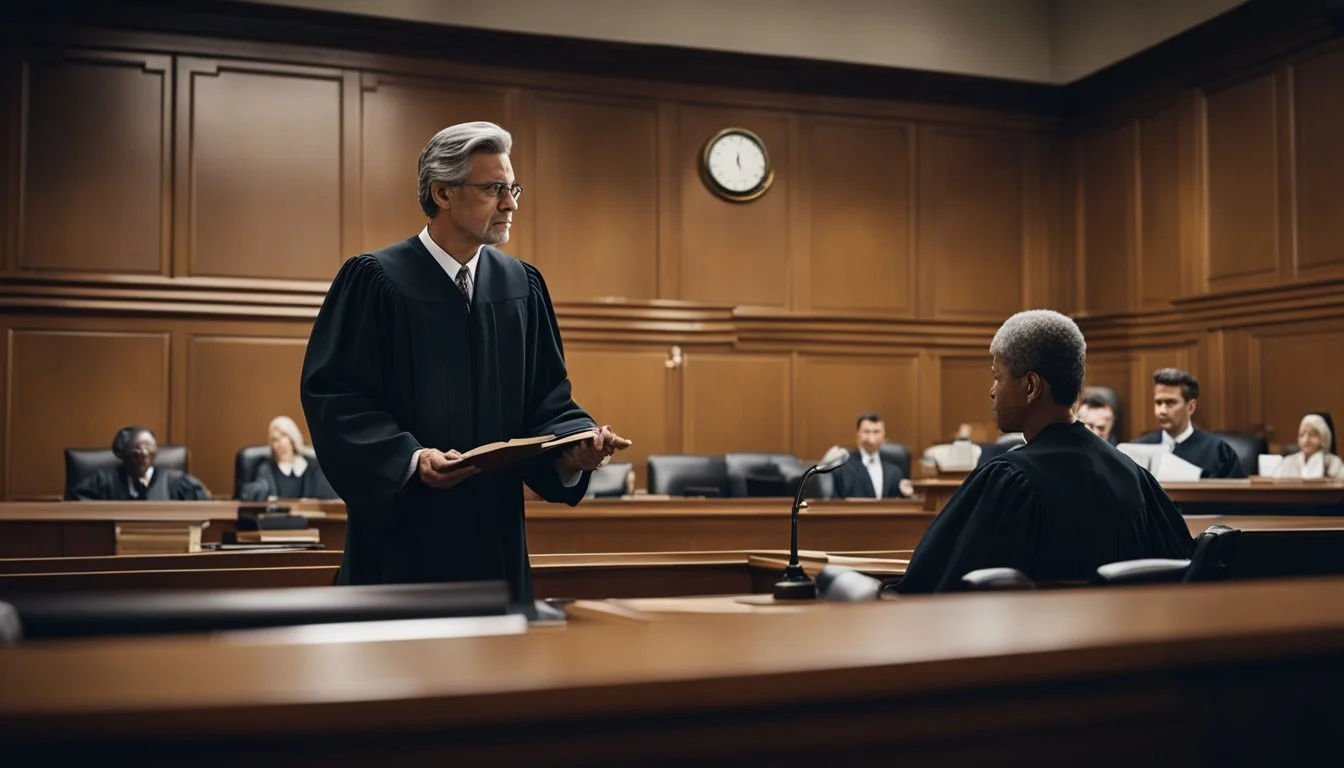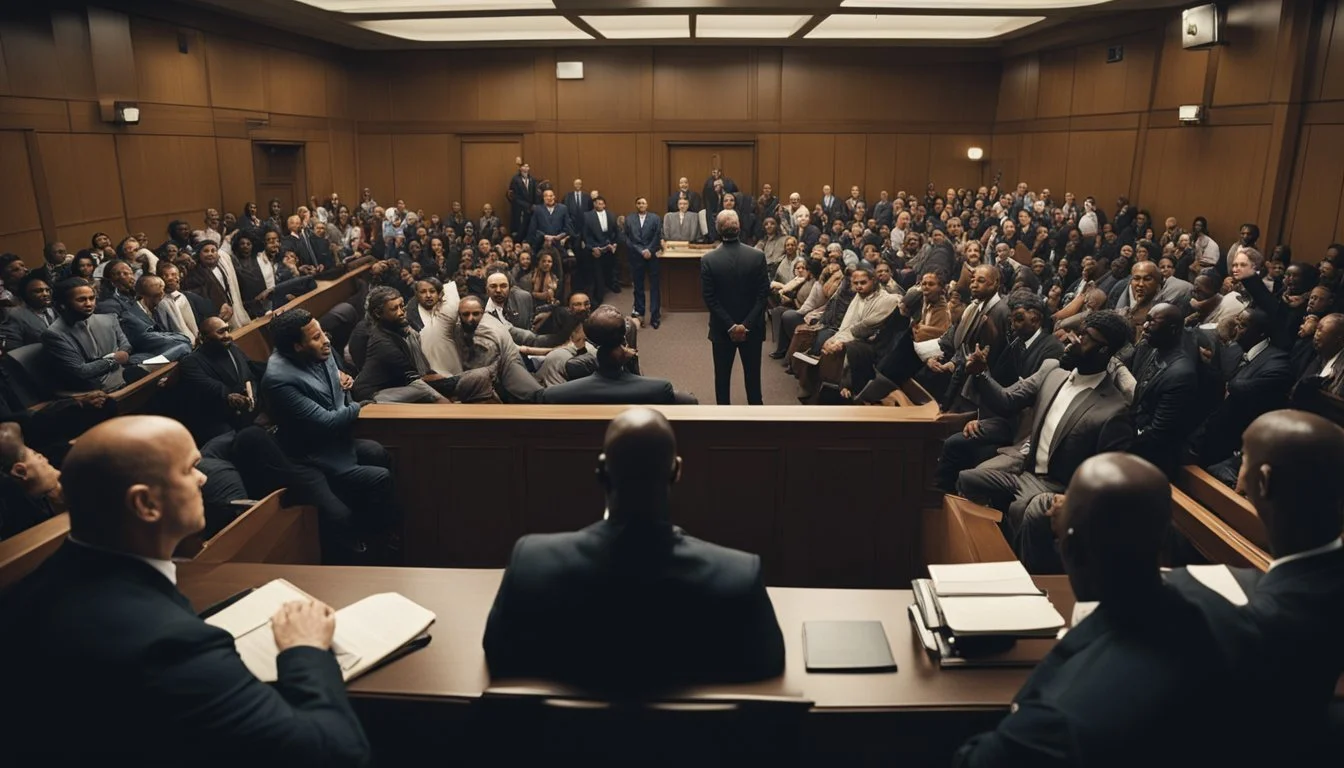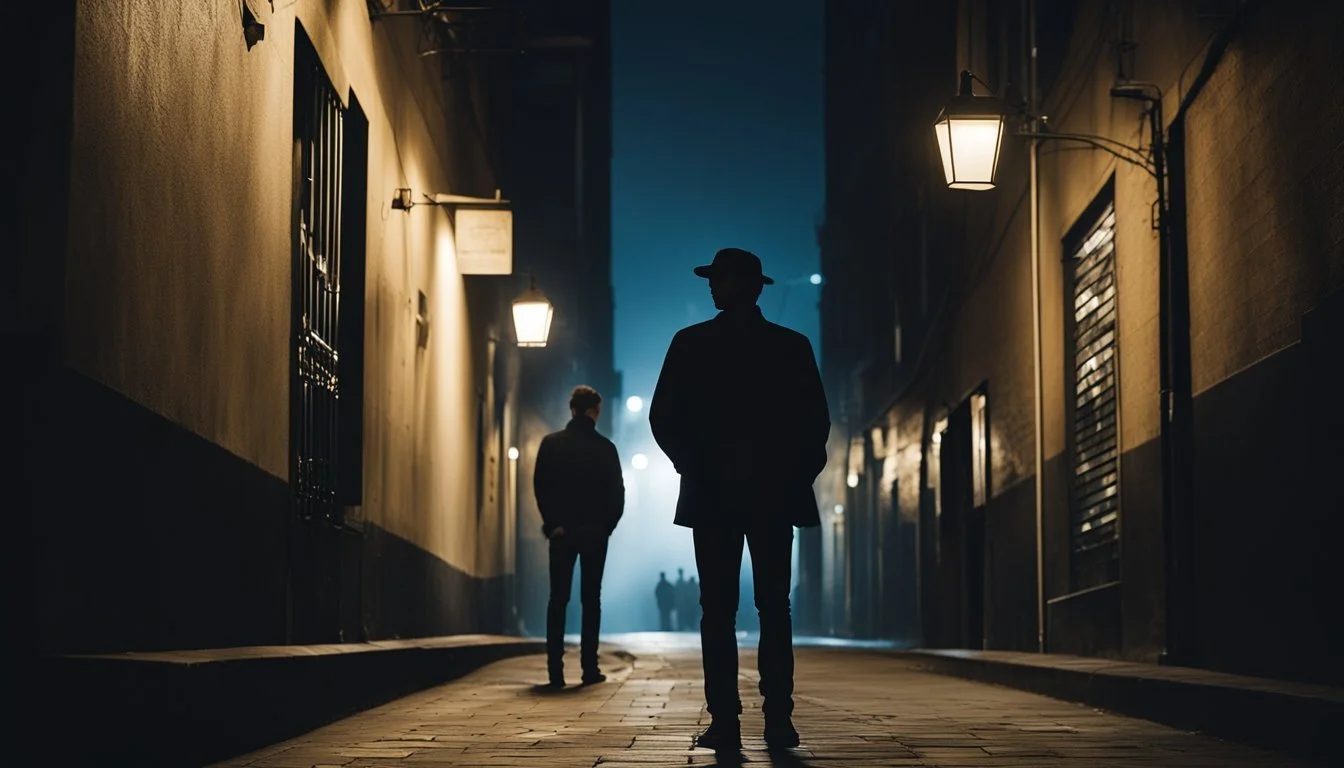Documentary Probes Controversial Claims in Unsolved Biggie and Tupac Murders
The unsolved murders of rap icons Tupac Shakur and The Notorious B.I.G. continue to captivate the public decades after their deaths. Nick Broomfield's documentary "Biggie & Tupac" reignited interest in these cases by presenting controversial claims and theories about the killings.
The film suggests that Death Row Records CEO Suge Knight orchestrated Tupac's murder and that corrupt LAPD officers were involved in Biggie's death. These explosive allegations implicate powerful figures in the music industry and law enforcement, adding layers of intrigue to the already complex cases.
Recent developments have brought renewed attention to these murders. In 2023, Las Vegas police arrested Duane "Keffe D" Davis in connection with Tupac's killing. Additionally, prosecutors working on Tupac's case have reportedly received thousands of pages of evidence from Biggie's murder file, potentially linking the two cases in unexpected ways.
The Illustrious Lives of Tupac Shakur and The Notorious B.I.G.
Tupac Shakur and Christopher Wallace, better known as The Notorious B.I.G., were two of the most influential figures in hip-hop history. Their meteoric rise to fame in the 1990s revolutionized the rap genre and left an indelible mark on music culture.
Tupac, born in 1971, emerged as a multifaceted artist. His raw, poetic lyrics and charismatic persona quickly propelled him to stardom. He released several platinum albums and starred in notable films before his untimely death in 1996.
The Notorious B.I.G., born in 1972, dominated the East Coast rap scene with his smooth flow and vivid storytelling. His debut album "Ready to Die" garnered critical acclaim and commercial success, solidifying his place as a hip-hop icon.
Initially friends, Tupac and Biggie's relationship soured, leading to a highly publicized rivalry. This East Coast-West Coast feud became a defining aspect of 1990s hip-hop culture.
Both artists' lives were tragically cut short. Tupac was fatally shot in Las Vegas in September 1996, while Biggie was killed in a drive-by shooting in Los Angeles six months later.
Their legacies continue to influence modern hip-hop. Posthumous releases, documentaries, and tributes keep their music and stories alive, cementing their status as rap legends.
The Mysterious Murders of Tupac and Biggie
The unsolved killings of Tupac Shakur and Christopher "Biggie" Wallace rocked the hip-hop world in the mid-1990s. These high-profile cases remain shrouded in controversy and speculation decades later.
Las Vegas Shooting of Tupac
On September 7, 1996, Tupac Shakur was shot multiple times in a drive-by shooting in Las Vegas. He was riding in the passenger seat of a car driven by Death Row Records CEO Suge Knight. The shooting occurred after the Mike Tyson vs. Bruce Seldon boxing match at the MGM Grand.
Tupac died six days later from his injuries on September 13, 1996. He was only 25 years old.
The case remained unsolved for nearly 30 years. In September 2023, Las Vegas police arrested Duane "Keffe D" Davis in connection with the murder. Davis, a former gang member, had previously admitted to being in the car from which the shots were fired.
Los Angeles Drive-By Shooting of Biggie
On March 9, 1997, Christopher "The Notorious B.I.G." Wallace was killed in a drive-by shooting in Los Angeles. He was leaving a party at the Petersen Automotive Museum when a black Chevrolet Impala pulled up alongside his SUV and fired multiple shots.
Biggie was rushed to Cedars-Sinai Medical Center but was pronounced dead at 1:15 a.m. He was 24 years old.
The murder occurred just six months after Tupac's death, fueling speculation about a connection between the two killings. Some theorized the shootings were related to the East Coast-West Coast hip-hop rivalry between Bad Boy Records and Death Row Records.
Despite numerous investigations and theories, Biggie's murder remains officially unsolved.
Investigation and Legal Proceedings
The investigations into the murders of Tupac Shakur and The Notorious B.I.G. spanned decades, involving multiple law enforcement agencies and generating numerous theories. Despite extensive efforts, the cases remained unsolved for many years.
LAPD's Involvement and Challenges
The Los Angeles Police Department (LAPD) faced significant hurdles in their investigation of The Notorious B.I.G.'s murder. Internal corruption allegations and lawsuits from the Wallace family complicated matters. Detective Greg Kading led a task force in 2006 to re-examine the case.
Kading's team uncovered new evidence and developed theories linking the murders to gang rivalries. However, the LAPD's efforts were hampered by uncooperative witnesses and lost evidence.
In 2009, the LAPD officially closed the case, citing lack of new leads. This decision sparked controversy and criticism from the public and the Wallace family.
Federal Investigation and Task Force
The FBI launched its own investigation into both murders in the late 1990s. They formed a task force combining resources from multiple agencies, including the LAPD and Las Vegas police.
The federal investigation explored potential connections between the murders and broader criminal enterprises. Agents interviewed hundreds of witnesses and examined financial records of key suspects.
Despite extensive efforts, the FBI's investigation failed to produce conclusive results. The task force was eventually disbanded, leaving many questions unanswered.
Public and Grand Jury Testimony
Several key figures provided testimony in various legal proceedings related to the murders. Former LAPD detective Russell Poole publicly accused fellow officers of involvement in The Notorious B.I.G.'s death.
In 2011, a grand jury heard testimony regarding Tupac's murder. Witnesses included former gang members and associates of Death Row Records. While this testimony generated new leads, it did not result in any indictments.
Public interest in the cases remained high, with numerous documentaries and books exploring different theories. These often featured interviews with retired detectives and witnesses, keeping the investigations in the public eye.
Culture and Impact on Society
The murders of Tupac and Biggie sent shockwaves through hip-hop culture and society at large. Their deaths highlighted deep divisions and sparked intense debates about violence, media responsibility, and artistic expression in rap music.
Gangs and the Hip-Hop Community
Gang culture became intertwined with hip-hop in the 1990s. Tupac's affiliation with Death Row Records and alleged ties to the Bloods contrasted with Biggie's connection to Bad Boy and supposed Crips associations. This fueled tensions between East and West Coast rap scenes.
The murders escalated fears of gang violence spilling into the music industry. Some artists distanced themselves from gang imagery, while others embraced it further. Hip-hop faced increased scrutiny and criticism for glorifying criminal lifestyles.
Community leaders called for an end to violence. Peace summits brought rival rappers together to quell tensions. The deaths prompted soul-searching within hip-hop about its direction and values.
Media Coverage and Public Perception
News outlets extensively covered the murders and subsequent investigations. Initial reporting often sensationalized the East Coast-West Coast rivalry. Some journalists faced criticism for promoting harmful stereotypes about rap culture.
Public perceptions of hip-hop shifted. The genre's commercial success clashed with its violent reputation. Parents and politicians expressed concerns about rap's influence on youth. Record labels faced pressure to censor explicit content.
Many fans felt conflicted. They mourned the loss of two iconic artists while questioning the culture that may have contributed to their deaths. The murders became cautionary tales about fame, wealth, and street credibility in hip-hop.
Media narratives evolved over time. Documentaries and books explored deeper issues surrounding the cases. Conspiracy theories emerged, keeping public interest alive for decades.
The Power Struggle and Conspiracy Theories
The murders of Tupac Shakur and The Notorious B.I.G. sparked intense speculation about behind-the-scenes power struggles and alleged conspiracies. Theories emerged pointing to record label feuds and possible law enforcement complicity.
Rivalry Between Death Row and Bad Boy Records
Death Row Records and Bad Boy Entertainment were fierce competitors in the 1990s hip-hop scene. Tupac, signed to Death Row, and Biggie, with Bad Boy, became focal points of this rivalry. Their personal relationship soured as tensions escalated between the labels.
Suge Knight, Death Row's CEO, was known for his aggressive tactics. He publicly taunted Sean "Puffy" Combs, Bad Boy's founder, at the 1995 Source Awards. This incident fueled rumors of a deepening East Coast-West Coast feud.
Some theorists claim the labels orchestrated violence to boost record sales and street credibility. Others suggest the rivalry spiraled out of control, leading to deadly consequences.
Allegations of Police and Gang Involvement
Conspiracy theories also implicate law enforcement and gang members in the rappers' deaths. LAPD Detective Russell Poole investigated Biggie's murder and developed controversial theories about police involvement.
Poole alleged that corrupt LAPD officers moonlighting as security for Death Row were involved in Biggie's killing. He claimed it was retaliation for Tupac's murder, which some believed was orchestrated by Combs and Biggie.
Gang connections added another layer to the theories. Some speculated that the Southside Crips were responsible for Tupac's death, while the Bloods allegedly targeted Biggie in response.
These theories remain unproven, but they continue to fuel debate and speculation about the unresolved murders.
The Families' Quest for Answers
The families of Biggie and Tupac have tirelessly pursued answers about the rappers' unsolved murders. Their efforts have kept the cases in the public eye for decades.
Voletta Wallace and the Legacy of Biggie
Voletta Wallace, Biggie's mother, has been a vocal advocate for justice in her son's case. She filed a wrongful death lawsuit against the LAPD in 2002, alleging police involvement in the murder.
The suit was dismissed in 2010, but Ms. Wallace continues to speak out. She has participated in documentaries and interviews, sharing her son's story and pushing for answers.
Ms. Wallace has also worked to preserve Biggie's legacy through the Christopher Wallace Memorial Foundation. The organization provides educational opportunities for youth in Brooklyn.
Seeking Justice for Tupac's Unresolved Murder
Tupac's family has taken legal action in their quest for answers. In 2023, they hired attorneys to investigate new claims about the rapper's murder.
These claims implicated music mogul Sean "Diddy" Combs in Tupac's death. The family's legal team is examining the allegations' credibility and potential impact on the case.
Afeni Shakur, Tupac's mother, established the Tupac Amaru Shakur Foundation before her death in 2016. The foundation supports youth arts programs and keeps Tupac's memory alive.
Both families continue to seek closure and accountability in these high-profile unsolved murders.
Significant Figures and Informants
The investigation into the murders of Tupac Shakur and Biggie Smalls involved key witnesses and informants who provided crucial information. Their testimonies and insights shed light on the events surrounding the high-profile killings.
Key Witnesses and Their Testimonies
Greg Kading, a former LAPD detective, played a significant role in the investigation. He formally began looking into the murders nearly a decade after they occurred. Kading's work uncovered new evidence and perspectives on the cases.
Another important figure was Duane Keith Davis, also known as Keffe D or Keefe D. As a former Southside Crip and self-proclaimed drug kingpin, Davis provided valuable insider information. His testimony offered insights into the alleged involvement of gang members in Tupac's murder.
Witness statements from individuals present at the scenes of the shootings were crucial. These accounts helped piece together the events leading up to and following the attacks on both rappers.
Informants and Their Impact on the Case
Informants played a pivotal role in advancing the investigations. Their connections to the criminal underworld provided investigators with leads and insider knowledge.
Keffe D's cooperation with authorities was particularly impactful. As a high-ranking Crip member, his information shed light on potential motives and key players involved in the murders.
Confidential informants within the music industry also contributed valuable information. Their insights helped investigators understand the complex relationships and rivalries that may have contributed to the killings.
The use of informants, however, raised questions about the reliability of their testimonies. Critics argued that some informants may have had ulterior motives or provided false information to protect themselves or others.
Contextualizing the East Coast vs. West Coast Rivalry
The East Coast vs. West Coast hip-hop rivalry of the 1990s had far-reaching impacts on music, culture, and the lives of its key figures. This conflict shaped the trajectory of rap music and left a lasting mark on the genre's history.
Cultural and Musical Implications
The rivalry between East Coast and West Coast rap scenes sparked intense creativity and competition. East Coast artists like The Notorious B.I.G. emphasized complex lyrics and gritty urban narratives. West Coast rappers like Tupac Shakur showcased a more melodic style with themes of social issues and street life.
This divide influenced fashion, slang, and attitudes among fans. It fueled record sales and media attention, propelling hip-hop further into mainstream culture. The rivalry also led to innovative production techniques as each coast sought to distinguish its sound.
Collaborations between artists from different regions became rare during this period. This limited cross-pollination of styles and reinforced regional identities within hip-hop.
The Personal Lives of Tupac and Biggie Amidst the Feud
Tupac Shakur and Christopher Wallace (The Notorious B.I.G.) were once friends before becoming central figures in the coastal rivalry. Their personal relationship deteriorated as tensions escalated between their respective record labels and fan bases.
Both artists faced increased scrutiny and pressure. Tupac was shot in a 1994 incident that he believed Biggie was involved in, deepening the rift. This event intensified Tupac's lyrics and public statements against East Coast rivals.
Biggie, initially reluctant to engage in the feud, eventually responded through his music. The rivalry consumed much of their public personas and creative output in their final years.
Tragically, both artists were murdered within six months of each other. Tupac was killed in Las Vegas in 1996, and Biggie in Los Angeles in 1997. These deaths marked the climax of the East-West rivalry and left a void in the hip-hop world.
Conclusion
The murders of Tupac Shakur and Biggie Smalls remain unsolved, leaving a lasting impact on hip-hop culture and sparking ongoing debates about what really happened. Their legacies continue to influence music and popular culture decades later.
Reflecting on the Legacies and Unsolved Questions
Tupac Shakur and Biggie Smalls left indelible marks on rap music. Their lyrical skills and cultural influence are still celebrated today. However, the circumstances surrounding their deaths continue to fuel speculation and conspiracy theories.
The East Coast-West Coast rivalry that framed their relationship has become part of hip-hop lore. It serves as a cautionary tale about how feuds can escalate with tragic consequences.
Numerous investigations have failed to definitively solve these high-profile cases. This has led to persistent questions about potential police involvement or music industry conspiracies. The lack of closure has kept public interest in the cases alive.
Their music remains widely popular and continues to inspire new generations of artists. Tupac and Biggie's legacies extend far beyond their brief careers, cementing their status as hip-hop icons.







